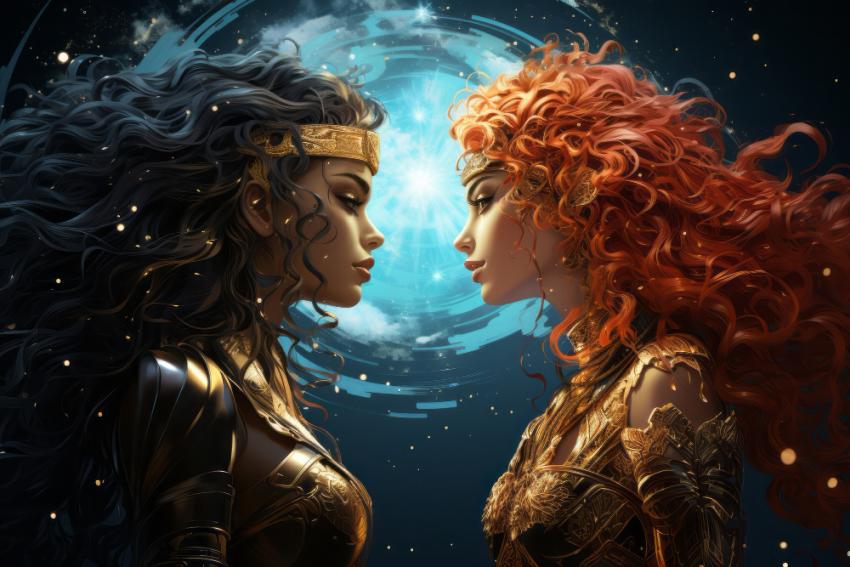Artificial Intelligence (AI) is revolutionizing numerous industries, including the realm of digital art. The intersection of AI and human creativity is creating groundbreaking possibilities, pushing the boundaries of what art can be. This article explores how AI is impacting digital art, enhancing human creativity, and opening new avenues for artistic expression.
The Rise of AI in Digital Art
AI’s integration into digital art began with its ability to analyze vast datasets and identify patterns. By learning from countless images, AI can generate original artworks, offering a new medium for artists to explore. AI tools like DeepArt, Google’s DeepDream, and OpenAI’s DALL-E are prime examples of how technology is merging with creativity.
Enhancing Artistic Creativity
AI acts as a powerful tool for artists, enabling them to experiment with new styles and techniques. By using AI algorithms, artists can generate unique visual elements, blend different artistic styles, and create complex patterns that would be difficult to achieve manually. For example, the AI tool DeepArt transforms photos into artworks in the style of famous painters like Van Gogh or Picasso, providing artists with fresh inspiration and creative possibilities.
Collaboration Between Humans and Machine
The collaboration between human artists and AI is creating a new paradigm in the art world. Instead of replacing human creativity, AI complements it by offering new tools and perspectives. Artists use AI to explore uncharted territories, while their human touch adds depth and emotion to the creations. This synergy leads to a new art genre where the line between human and machine creativity blurs.
AI-Generated Art in the Market
AI-generated art is gaining recognition and value in the art market. In 2018, an AI-generated artwork titled “Portrait of Edmond de Belamy” was sold at Christie’s auction house for $432,500, far exceeding its initial estimate. This sale highlighted the growing interest and acceptance of AI art in the traditional art market. AI-generated art is not just a novelty but a legitimate form of artistic expression that collectors and enthusiasts are beginning to appreciate.
Personalization and Customization
One of the significant advantages of AI in digital art is its ability to create personalized and customized artworks. AI can analyze individual preferences and generate art that resonates with specific tastes. This level of personalization was previously unattainable, allowing for a more intimate connection between the artwork and its audience. For instance, platforms like Artfinder use AI to recommend artworks based on users’ browsing histories and preferences, enhancing the art buying experience.
Democratizing Art Creation
AI is democratizing the creation of digital art by making advanced tools accessible to a broader audience. Even those without formal artistic training can use AI tools to create stunning artworks. Applications like Canva and Adobe Spark leverage AI to offer user-friendly interfaces and smart design suggestions, enabling anyone to produce high-quality digital art. This democratization is fostering a more inclusive creative community, where more people can participate and express themselves artistically.
AI in Animation and Multimedia
AI is also making significant strides in animation and multimedia. AI-driven software can automate labor-intensive tasks such as in-betweening, colorization, and lip-syncing, allowing animators to focus on the creative aspects of their projects. For example, Disney Research developed an AI tool that can automatically generate realistic facial expressions for animated characters, significantly speeding up the animation process. This technology is revolutionizing the animation industry, making it more efficient and innovative.
Ethical Considerations
As AI continues to evolve in the realm of digital art, ethical considerations must be addressed. Issues such as authorship, originality, and the potential for AI to replicate existing artworks without permission are important discussions in the art community. Establishing guidelines and standards for AI-generated art will be crucial to ensure that this new form of creativity is used responsibly and ethically. Transparency about the use of AI in the creation process can help maintain trust and integrity in the art world.
The Future of AI and Human Creativity
The future of AI and human creativity in digital art looks promising. As AI technology advances, artists will have even more sophisticated tools at their disposal. We can expect AI to provide real-time collaboration, predictive analytics for artistic trends, and more immersive creative experiences. This evolution will undoubtedly push the boundaries of digital art, leading to unprecedented innovation and expression.
Conclusion
The intersection of AI and human creativity in digital art is opening new horizons for artists and audiences alike. AI enhances creativity, offers new tools for artistic expression, and democratizes art creation. As we navigate the ethical considerations and embrace the potential of AI, we can look forward to a future where human and machine creativity coalesce, leading to a richer and more diverse art world.
In this rapidly evolving landscape, staying informed about the latest AI advancements and trends will be crucial for artists and art enthusiasts. Embracing AI in digital art can open up new possibilities, pushing the boundaries of creativity and setting new standards in digital art.
Banner Image by freepik
![]()



